Quiz: Ontario Traffic Rules 2
Once you have prepared sufficiently for your G1 exam, you must make sure that you schedule and pay for your exam. On the day of the exam, you will be required to show specific types of identification so you need to know exactly what they are well in advance.
ADVERTISEMENT
ADVERTISEMENT
What documents may police officers require drivers to produce?
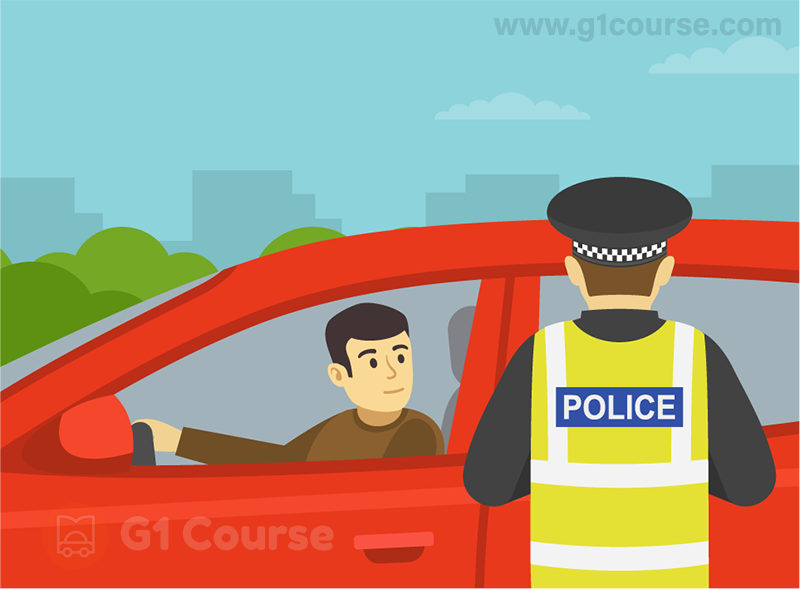
All of these
A pink insurance slip for the vehicle being driven
The ownership papers for the vehicle being driven
Their own valid driver’s license
Correct!
Wrong!
Under what circumstances could drivers lose their license?
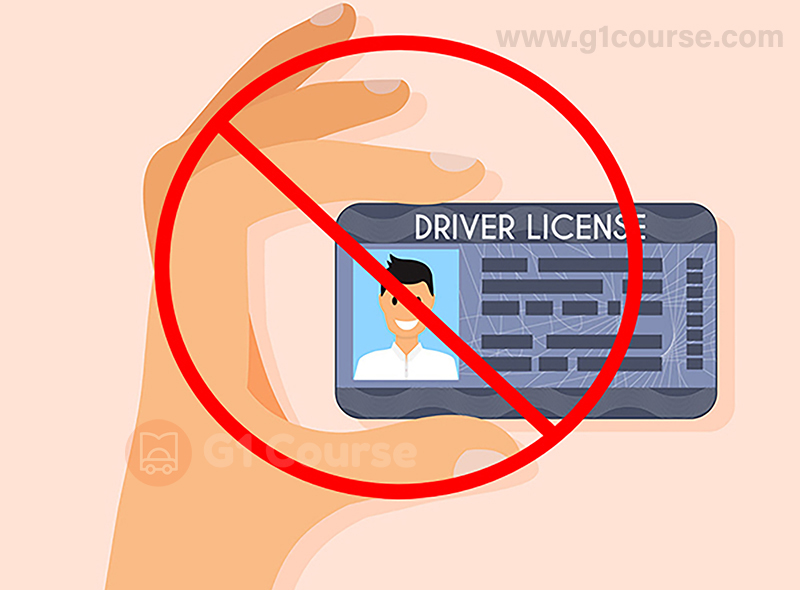
All of these
Failure to attend a re-examination
Failure to pay a reinstatement fee
Failure to pay a traffic fine when ordered by the courts
Correct!
Wrong!
How much insurance coverage is provided to an uninsured driver?
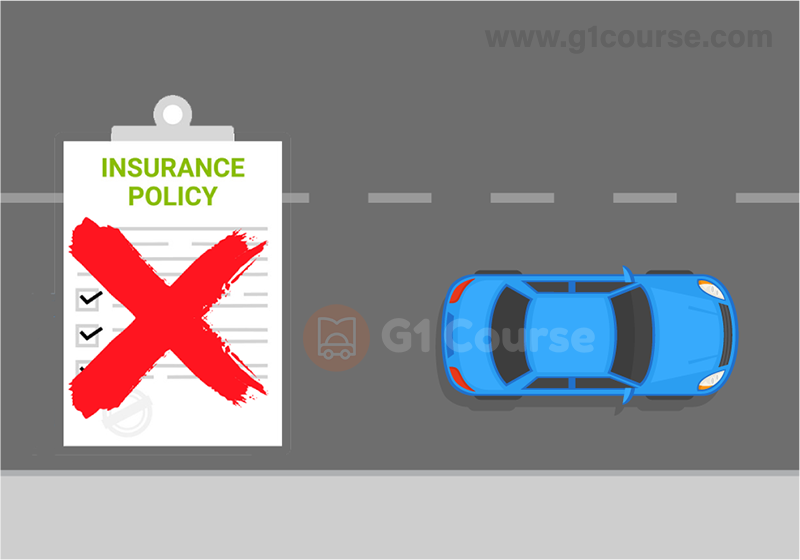
No coverage whatsoever
$10,000 insurance coverage
$15,000 insurance coverage
$20,000 insurance coverage
Correct!
Wrong!
The first time they reach 15 demerit points, fully-licensed G drivers will have their license:
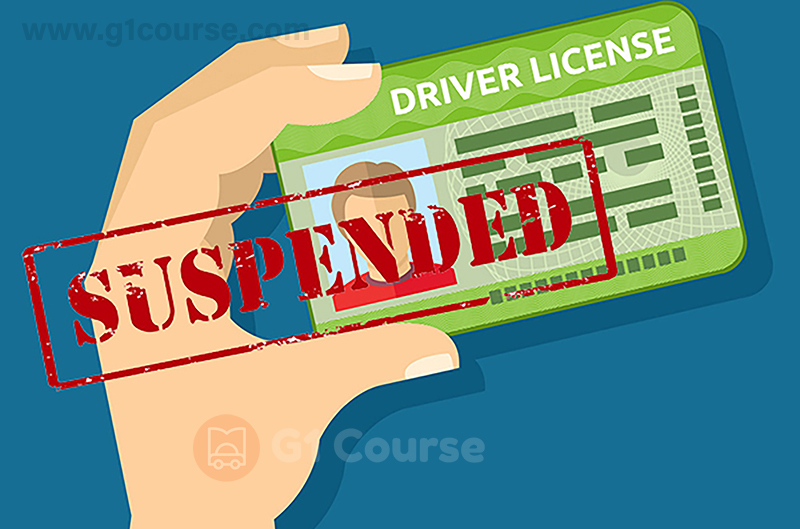
Suspended for 30 days
Suspended for 60 days
Suspended for 7 days
Suspended for 15 days
Correct!
Wrong!
If a traffic signal changes while a pedestrian is still on the street, who has the right-of-way?
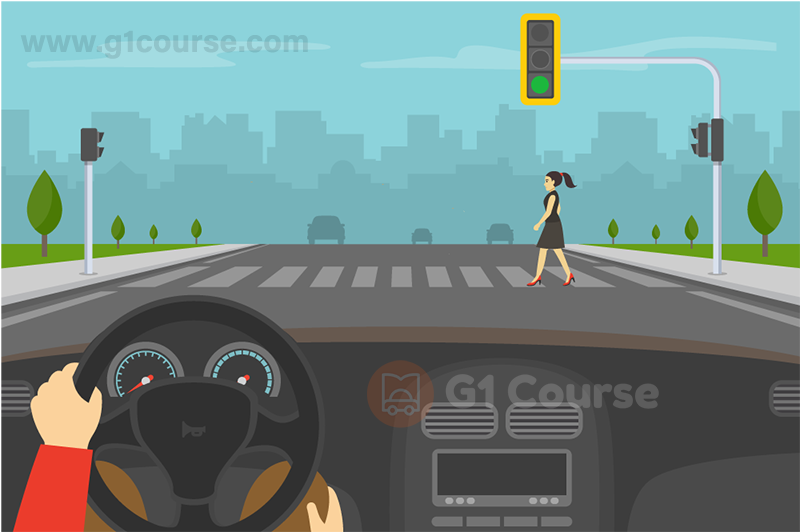
The pedestrian
Motorists making a turn
Motorists coming from right
Motorists coming from left
Correct!
Wrong!
Pedestrians facing a flashing or steady red hand symbol should:
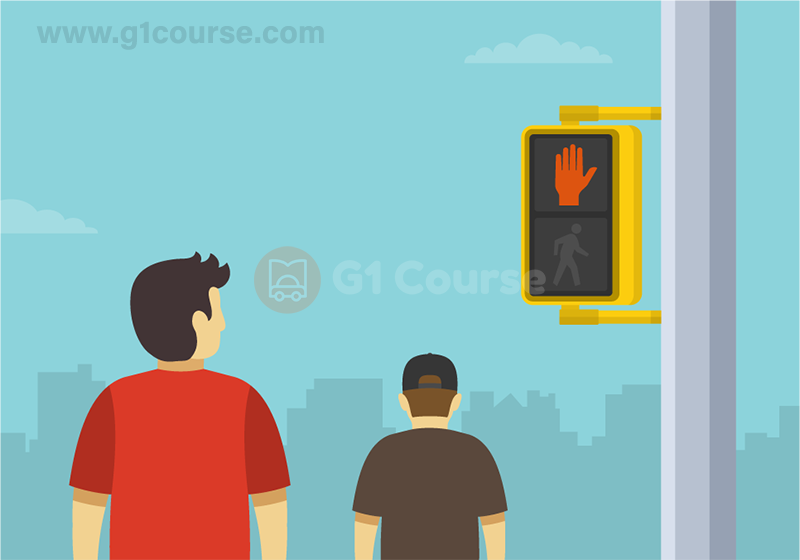
Not begin to cross the road. If they have already begun to cross, they should finish crossing quickly and safely
Race across the intersection as quickly as possible
Wave at the red hand in order to be polite
Cross slowly
Correct!
Wrong!
When a police officer motions them to go through an intersection where the light is red, what should drivers do?
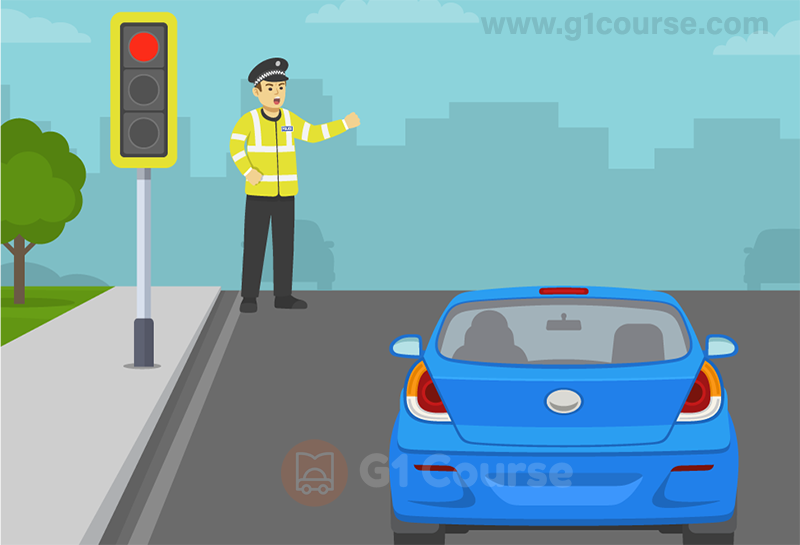
Obey the police officer’s signal and proceed
Wait for the light to turn green
Call the police officer’s attention to the red light
Stop to make sure the police officer wants them to go through
Correct!
Wrong!
Never change lanes in traffic without…?
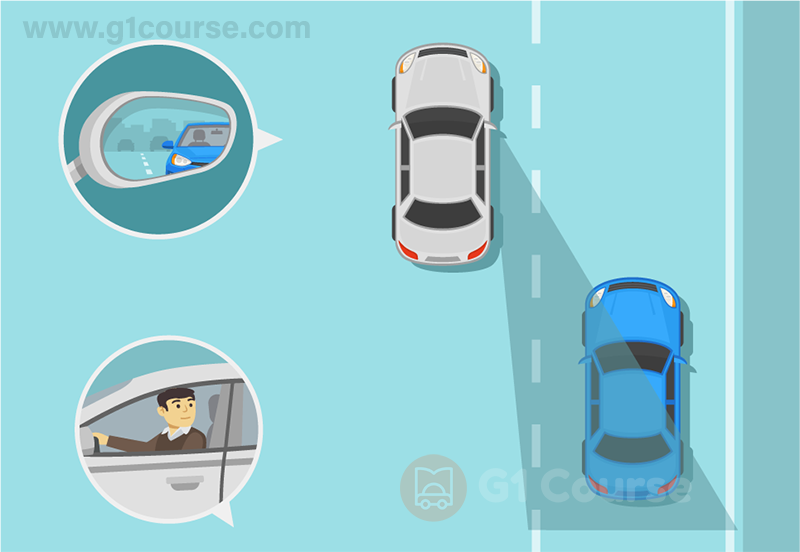
Signaling, checking the rear view mirror and checking blind spots
Checking the rear view mirror
Honking the horn and providing the appropriate hand signal
Signaling and decreasing speed
Correct!
Wrong!
When involved in a reportable accident, drivers must report this to their nearest provincial or municipal police…
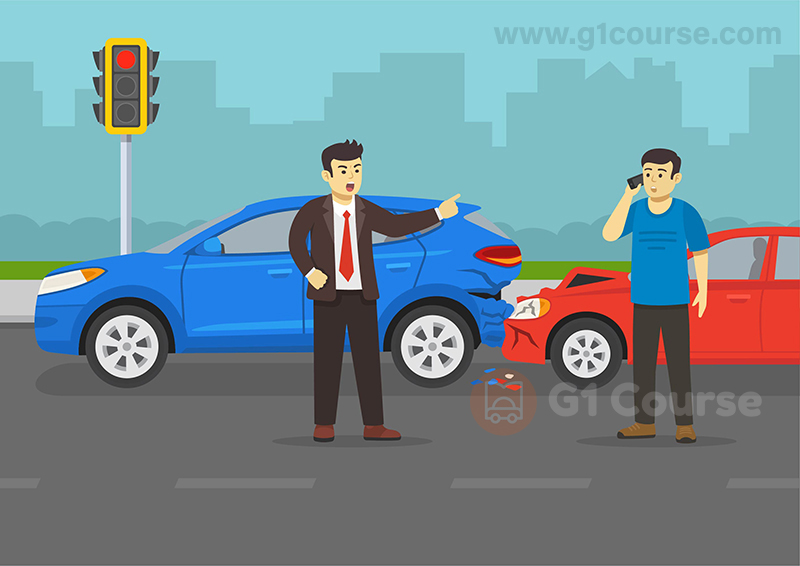
Immediately
Within 24 hours
Within 48 hours
Within 72 hours
Correct!
Wrong!
When are drivers permitted to lend their license to someone else?
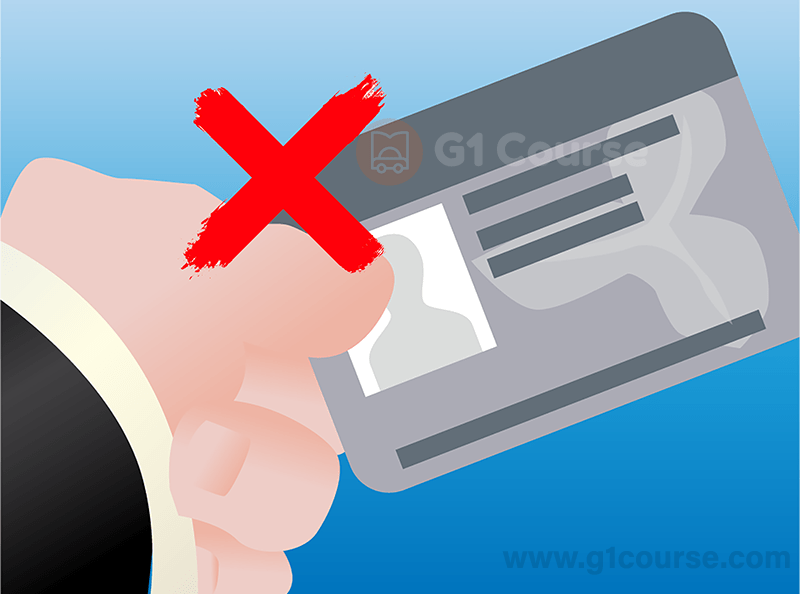
Never
When the other person is learning to drive
When the other person needs it for identification purposes
When the other person needs it for an emergency
Correct!
Wrong!
A school bus with red signal lights flashing is stopped on a highway that has no median strip. What does the law require drivers to do?
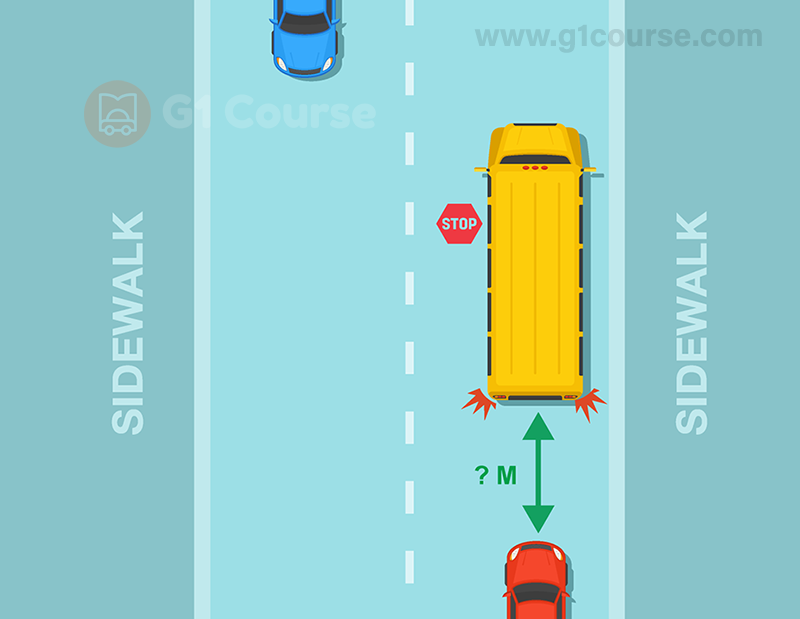
Stop at least 20 m away if approaching the bus from behind or stop a safe distance from the bus if approaching from the opposite direction. Proceed only when the bus’ signal lights are no longer flashing
Proceed along the road, honking their horns loudly
Wait for approaching vehicles to pass, then pass
Reduce speed and pass with care, watching for children who may be crossing the highway
Correct!
Wrong!
In good weather, what is the minimum following distance drivers should maintain between their vehicle and a motorcycle in front of them?
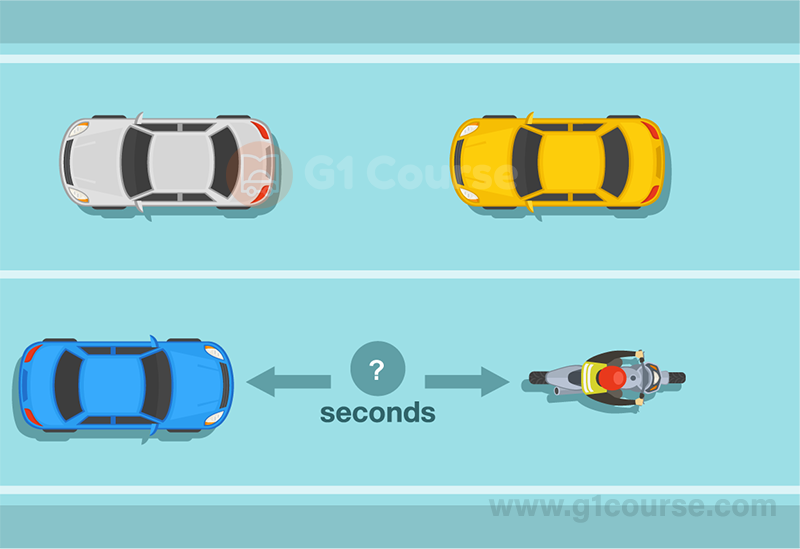
2 seconds or More
1 seconds
3 seconds
4 seconds
Correct!
Wrong!
What should drivers do if they become drowsy while driving?
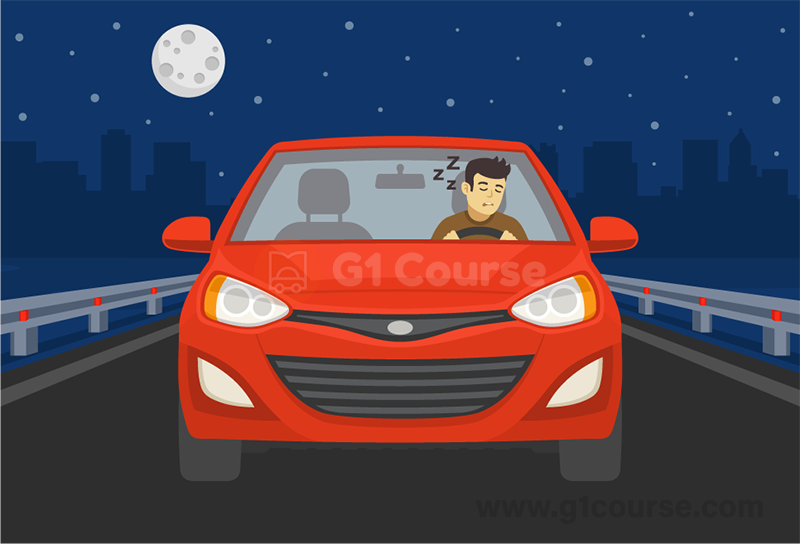
Stop in a safe area and rest
Reduce speed
Turn up the radio
Open the window for some fresh air
Correct!
Wrong!
When approaching an intersection and the roadway beyond is blocked with traffic, you should:
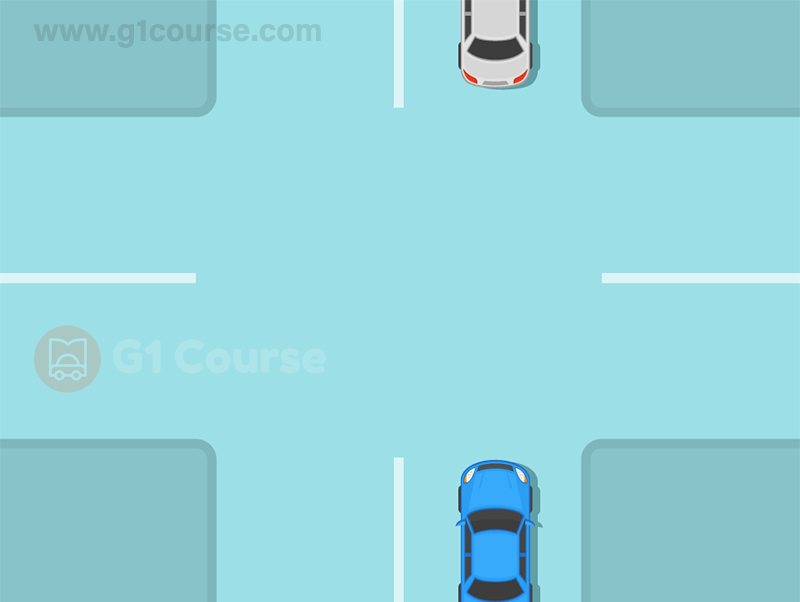
Stop and wait until the traffic ahead moves on before entering the intersection
Keep as close as possible to the car ahead
Make a U-turn and find another road that does not have a traffic jam
Honk loudly to warn cars ahead to start moving
Correct!
Wrong!
Wet roadways can cause:
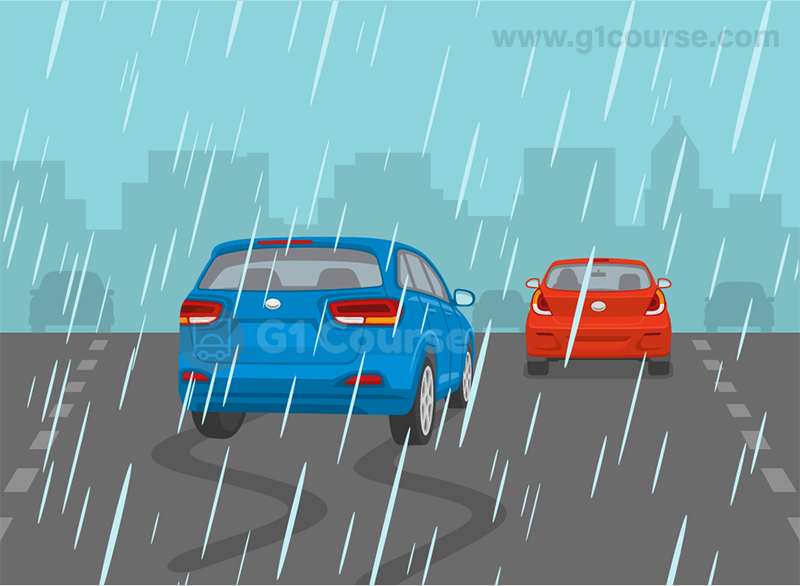
All of these
Poor visibility
Hydroplaning
Loss of traction
Correct!
Wrong!
What is the consequence for the third or subsequent occurrence of a driver caught with a blood alcohol concentration in the ‘warn range’ of 0.05 to 0.08?
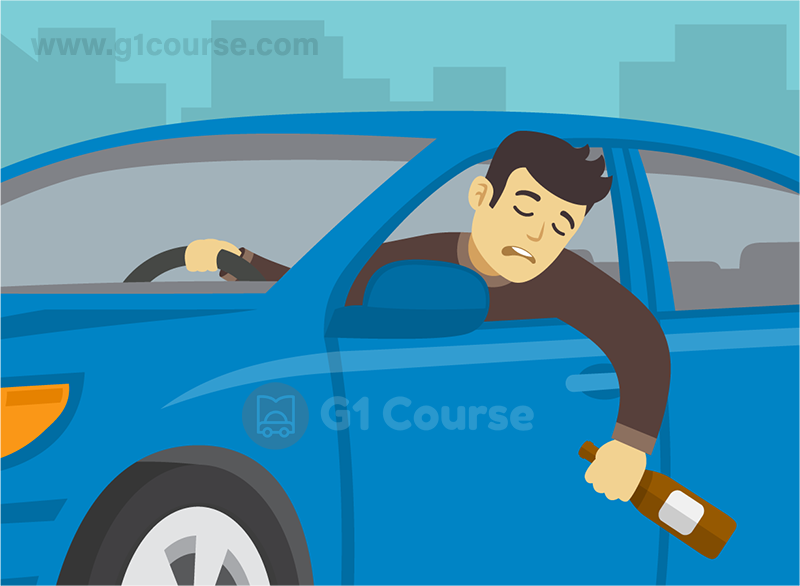
All of these
A 30-day license suspension and a $150 fine
A mandatory alcohol treatment program
An ignition interlock condition lasting six months
Correct!
Wrong!
How much time do drivers have to inform the Ministry of Transportation of any change of name or address?
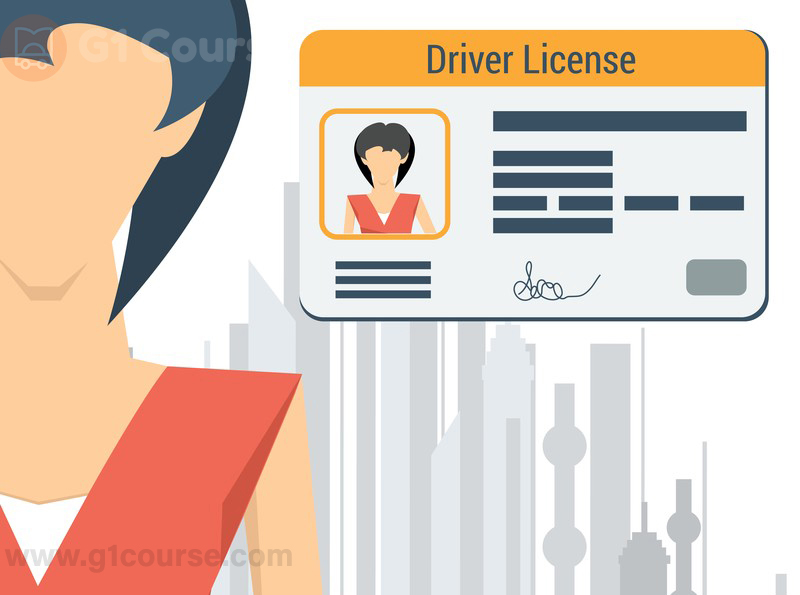
Within 6 days
Within 12 days
Within 28 days
Until the next time they need to renew their license
Correct!
Wrong!
What is the best way to stop quickly on a wet or icy road?
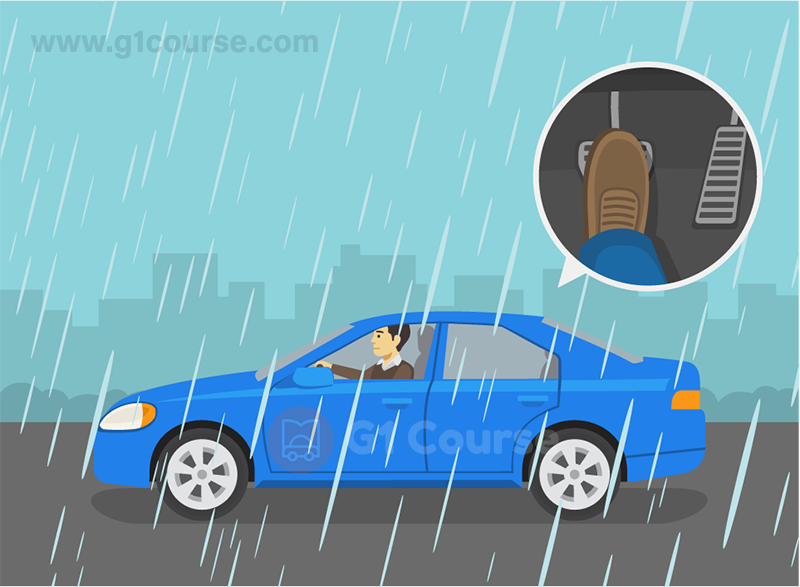
Brake firmly. If the wheels lock, release and reapply the brakes in quick succession until the vehicle comes to a stop
Brake hard and hold the wheel firmly to prevent the vehicle from skidding
Do not brake. Release the gas pedal and let the vehicle slow down and stop on its own
Apply the brakes as usual; do not brake hard
Correct!
Wrong!
By law, drivers must report a collision to the police when a person sustains injuries, or when there is damage to vehicles or other property exceeding:
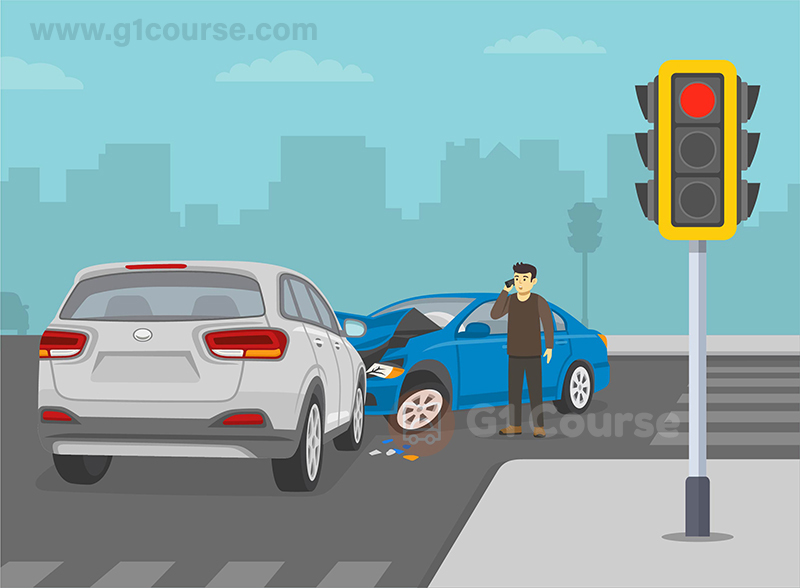
$2000
$100
$200
$500
Correct!
Wrong!
A solid line to the left of a lane means:
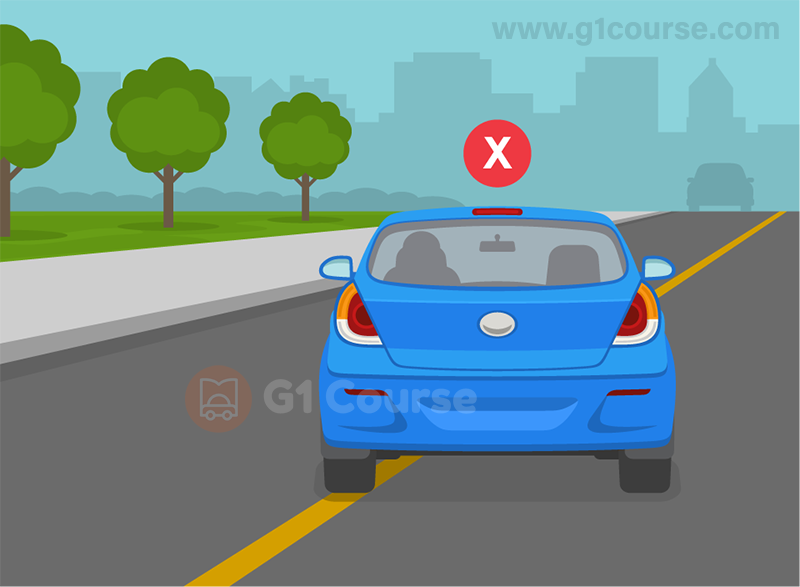
It is unsafe to pass
Overtake and pass with caution
Pass only when there is no traffic in sight
Pass as soon as it is safe to do so
Correct!
Wrong!
The Accessible Parking Permit?
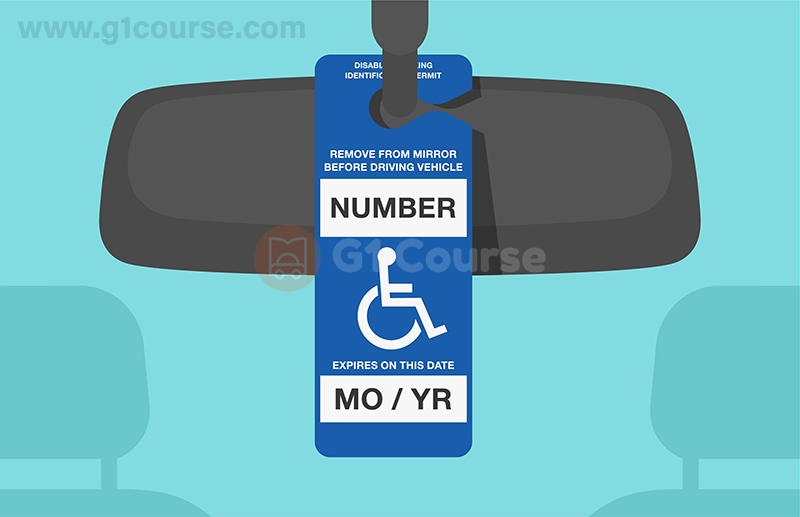
Issued to an individual, entitles the vehicle in which it is displayed to be parked in a designated disabled parking space
Permits the person with the disability to park anywhere, including areas signed, “No Parking”
Allows drivers to park in a disabled parking space even if the person with the disability is a not passenger
All of these
Correct!
Wrong!
If a commercial vehicle becomes disabled on the highway during a period that lights are required, flares or reflectors must be placed on the front and the rear of vehicle at an approximate distance of…
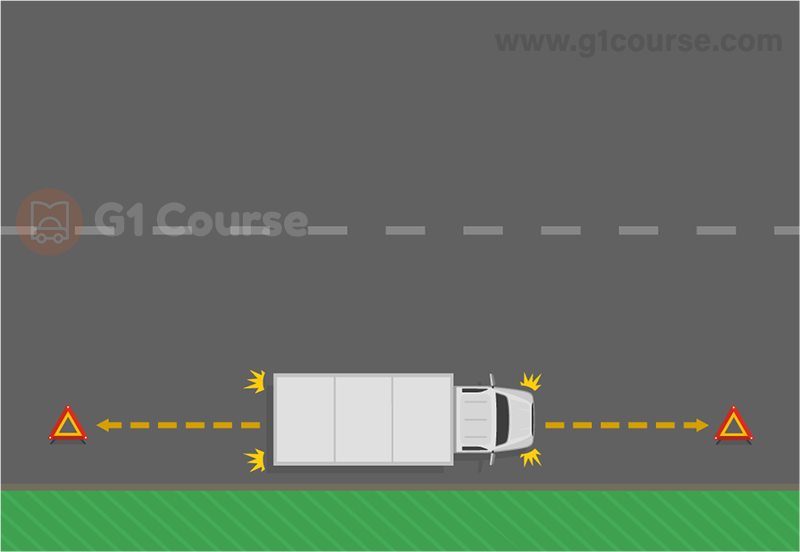
30 m
60 m
90 m
100 m
Correct!
Wrong!
The Ministry of Transportation may suspend the license of G drivers after a nine demerit point interview:
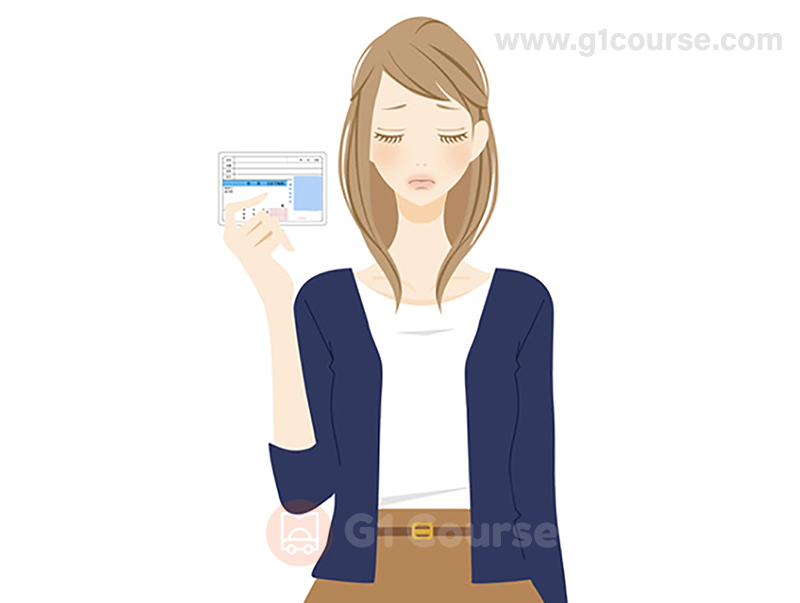
If the driver fails to attend the interview, or fails to give good reasons for being permitted to keep the license
If the driver does not have at least 5 years driving experience
If the license is not needed for business purposes
The Ministry is not permitted to suspend licenses until drivers reach 15 demerit points
Correct!
Wrong!
What is the safest action for drivers to take when their vehicle drives over black ice?
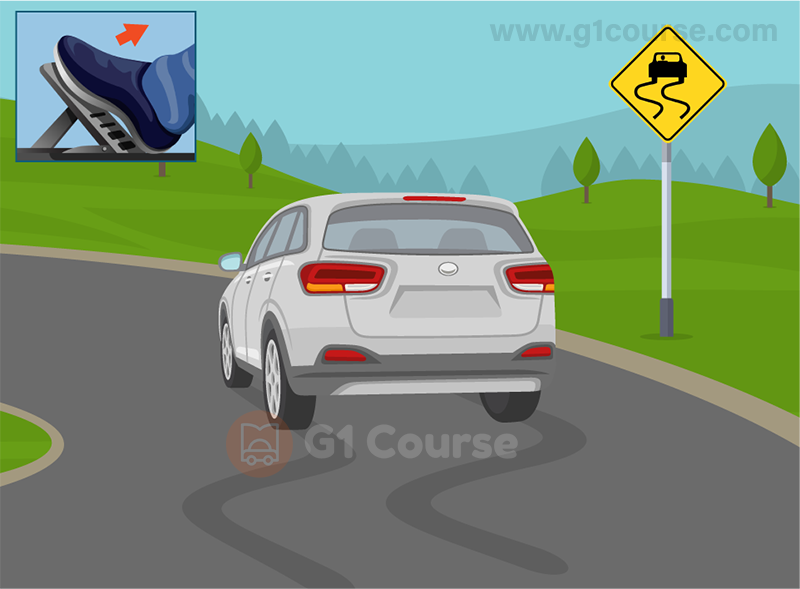
Calmly remove their foot from the accelerator and steer in the desired direction
Calmly remove their foot from the accelerator and steer immediately to side of the road
Brake hard while maintaining a firm grip on the steering wheel
Put the vehicle in neutral and steer in the desired direction
Correct!
Wrong!
When approaching a railway crossing where an electrical or mechanical signal device is warning of an approaching train, drivers must:
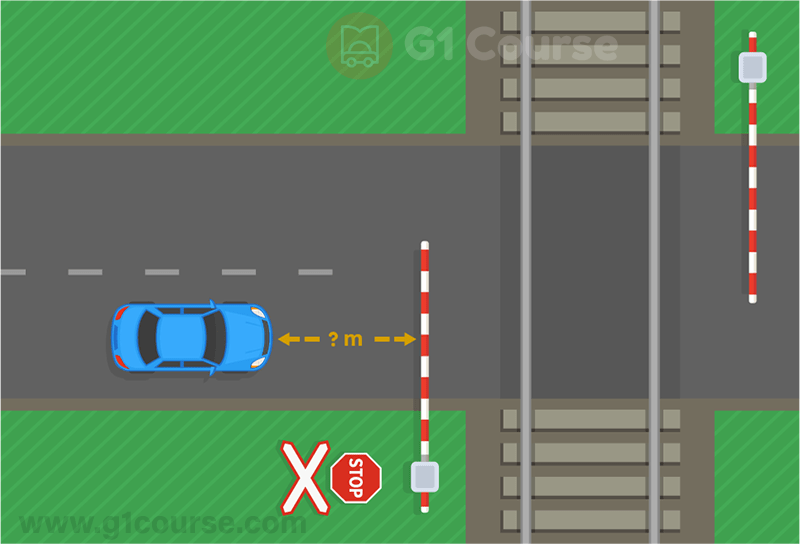
Stop at least 5 m from the nearest rail or gate
Stop at least 1.5 m from the nearest rail or gate
Accelerate and cross the tracks as quickly as possible
Slow down and proceed across the tracks with extreme caution
Correct!
Wrong!
What does the red light with a green arrow mean?
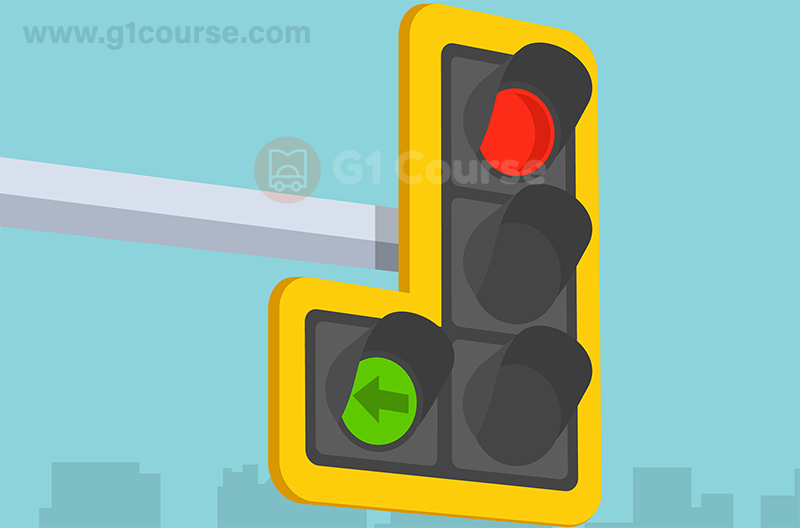
Proceed with caution in the direction of arrow
Stop and then proceed
The green arrow is for pedestrians only
Stop and wait for a green light before turning in the direction of the arrow
Correct!
Wrong!
Fully licensed drivers (G license) may be required to attend an interview and/or re-examination of their driving ability at:

9 demerit points
3 demerit points
6 demerit points
15 demerit points
Correct!
Wrong!
A flashing green light at an intersection where turns to the left and right are permitted indicates that drivers may:
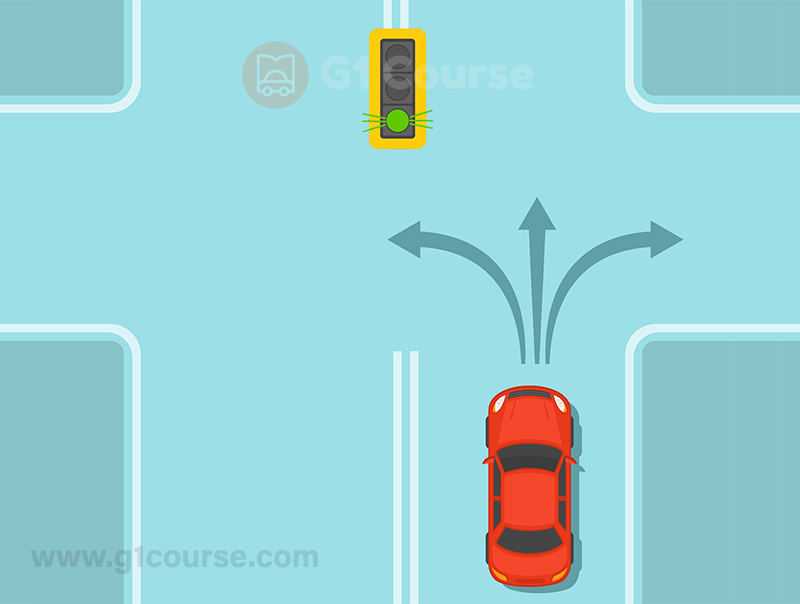
Turn right or left or go straight if the way is clear
Turn to the left if the way is clear
Turn to the right if the way is clear
Proceed straight through if the way is clear
Correct!
Wrong!
A flashing blue light mounted on a motor vehicle indicates:
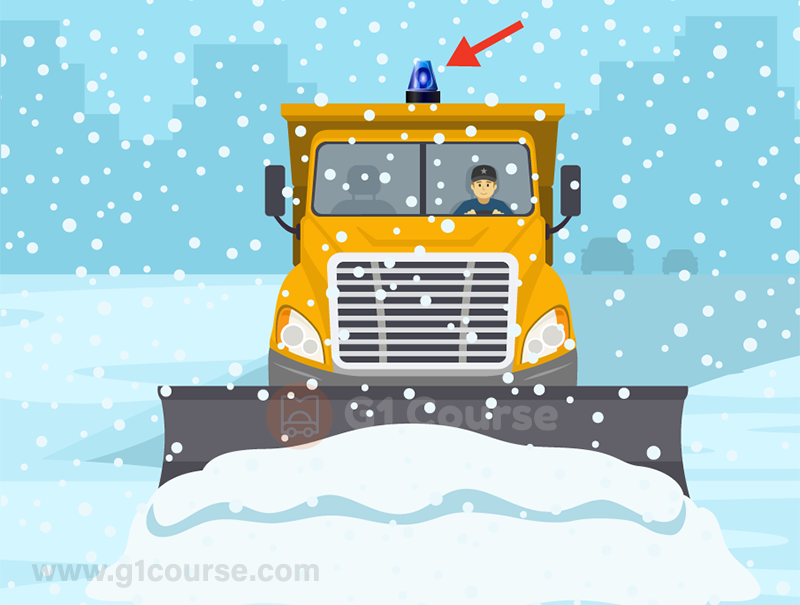
Snow removal equipment
A motor vehicle carrying explosives
An ambulance
A police emergency vehicle
Correct!
Wrong!
The hand-and-arm signal for right turn is indicated by:
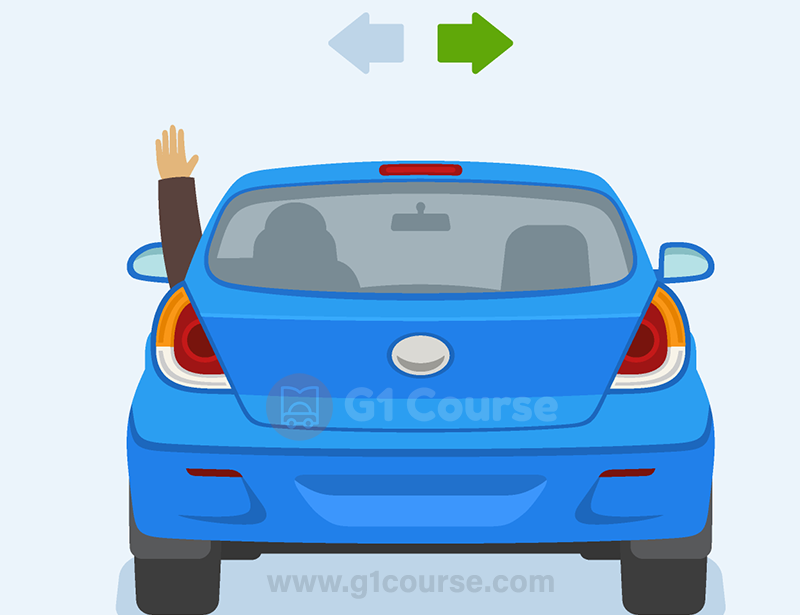
Arm out and up
Circular motion of the arm
Arm straight out the window
Arm out and down
Correct!
Wrong!
Share the quiz to show your results !
Subscribe to see your results
G1-Rules2
I got %%score%% of %%total%% right
%%description%%
%%description%%
More Learning Options:
Loading…
ADVERTISEMENT
